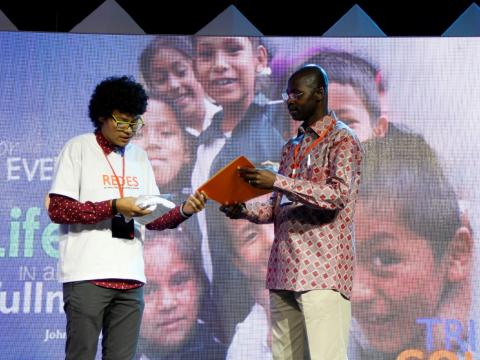We hear and we act – taking children’s recommendations seriously

Three years ago, 34 young people presented five recommendations to the Triennial Council on how World Vision could partner more effectively with them. These recommendations were summarized from the input of thousands of children across all regions in meetings leading up to the Council. The response to the children was positive at the time, but how would World Vision respond after the Council was over?
The participation of the young people was a game changer, but the challenge for World Vision remained. No response or a limited response would leave us open to accusations of tokenism. A concerted response would require a way of taking the recommendations back to the children, contextualizing them and establishing a mechanism for monitoring our response.
At the 2016 Triennial Council in Bogota, a group of young people from Latin America presented a report on progress against the recommendations. An accountability mechanism based on the Citizen Voice and Action methodology was developed and utilised in 25 countries. It allowed children to review the recommendations, define what each one meant to them in their context, then to rank how World Vision were doing on each one. This mechanism allows children to gain ownership over the recommendations. It also provides World Vision with a unique opportunity to provide a space for children to assess our performance as partners in development, and to identify areas for improvement.
At the Triennial Council in November, the children reflected on the data and gave their assessment. “Whilst World Vision is ranked 30-50% ‘good’, or ‘very good’ on most of the recommendations, we need to get to 100%!” said Davinson, a 2016 nominee of the International Children’s Peace Prize and proud member of the Children’s Movement for Peace in Colombia.
World Vision has made significant steps towards enabling children to participate meaningfully in decisions that affect their lives. The institutionalization of the accountability mechanism can strengthen this commitment. Whilst 25 countries is a good start, the young people at the Triennial Council urged all National Offices to utilise the tool and engage in consistent dialogue with children’s groups. Not only does it allow World Vision and children to monitor our progress on partnering and working effectively with them, but above all, it shows that we take children’s views seriously and act on them.
For more information about this and World Vision’s child participation work, please contact Paul_Stephenson@wvi.org and Tiffany_Tao_Joiner@wvi.org